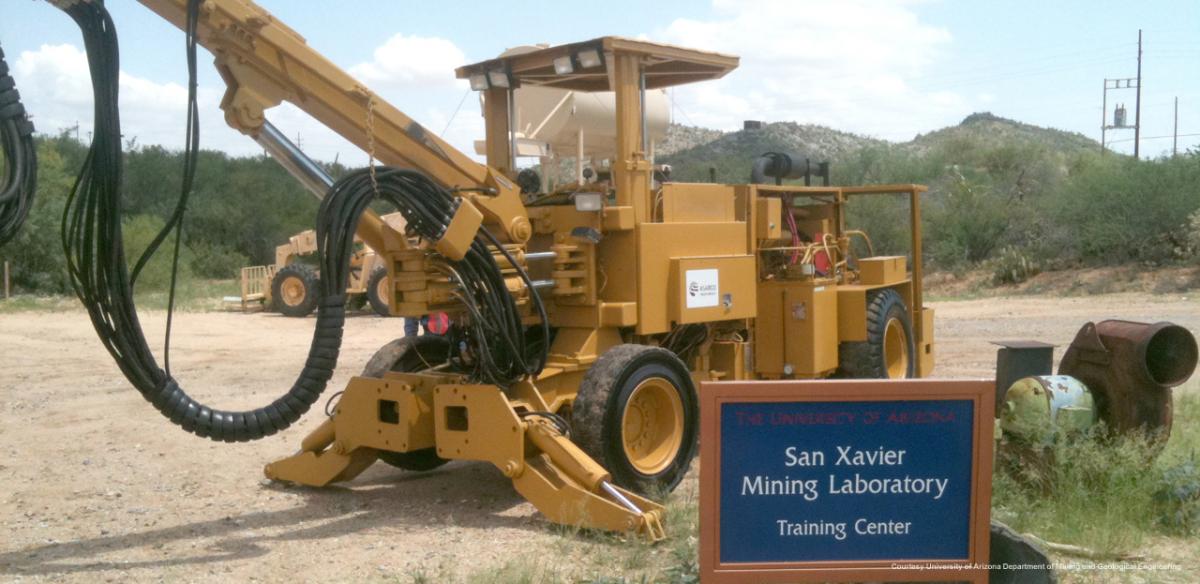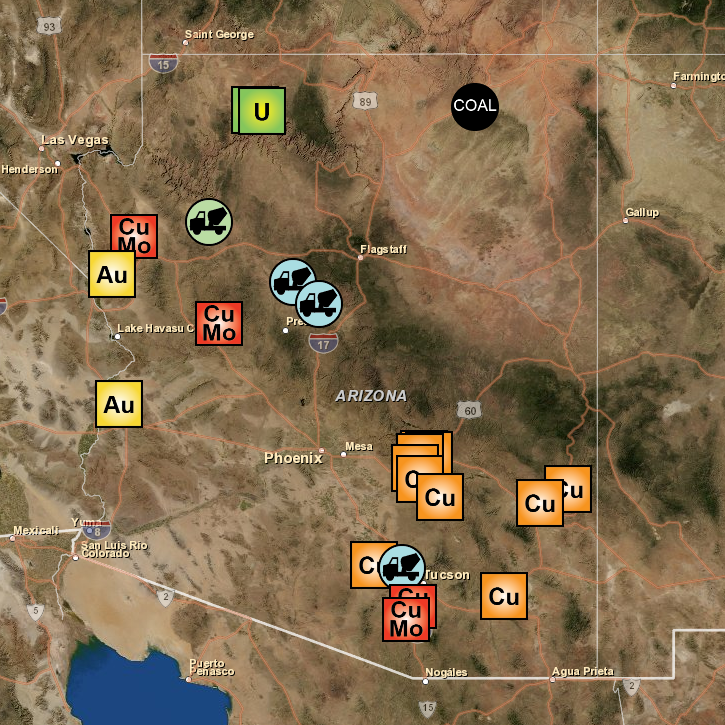
Arizona has led copper production in the U.S. since 1910 and still enjoys that distinction, producing approximately 64% of domestic copper. The first of Arizona’s “Five Cs,” copper is the state’s most valuable mineral commodity, comprising 75% of the value of Arizona’s total nonfuel mineral production.
In addition to copper, molybdenum, construction sand and gravel, portland cement, crushed stone, and lime contribute significantly to Arizona’s economy. These six commodities comprise 99% of the state’s total production value, worth $7.84 billion in 2008.
Over 350 quarries and aggregate plants produce industrial minerals and rock products such as, lime, construction sand and gravel, salt, and pumice and perlite.In addition to metals, energy sources such as uranium and coal are mined on the Colorado Plateau.

Copper mining and refining provides over 10,000 jobs in Arizona. According to the Arizona Mining Association, the combined direct and indirect impact of copper mining was worth up to $34.2 Billion in the U.S. economy and 12.1 billion in Arizona.
Many towns were built on mining claims from the 1880s to the 1920s, with mining companies like Arizona Central and Phelps Dodge investing in equipment, refinement facilities, and infrastructure to transport goods. Immigrants from all over the world found work in the mines. Labor disputes between miners and their company were common. By the 1970s copper was running out.
Some early mine sites, such as Bisbee and Jerome, shrank to the brink of nonexistence when the mines closed but found new life as tourist havens. Former copper towns in central Arizona have formed the Copper Corridor, a movement to attract tourism due to their mining history. Others, like Morenci and Bagdad, still significantly contribute to Arizona’s gross exports. The Morenci open pit complex is the largest copper mine in North America and the largest employer in Greenlee County. Additional copper-rich areas
Silver and Gold

Gold and silver play a significant role in Arizona’s mining history. In the 1850s–1860s, prospectors placer mined gold from rivers in central Arizona. New technology has unlocked previously unaccessible ore, and two gold mines have opened in the past decade.
The Cochise County town of Tombstone was founded near a silver deposit that produced $13 million of the precious metal, and silver was found in Globe and Superior. Arizona’s name is thought to come from Arizonac, a silver mine southeast of Nogales that produced large silver nuggets, some weighing over a ton. Today, Arizona is fifth in the nation for the production of silver, mined mostly as a byproduct from copper processing.
Ore Refinement
Any metal-bearing rock is known as ore. The feasibility of a mine is determined in part by ore grade. In the early 1900s, 30% pure ore (600 pounds of copper per ton) was the average copper content. By the 1930s, ore purity (concentration) had fallen to approximately 4%. Newer mining technologies were developed to process ore with low mineral content, and today it is common to mine ore with a purity of just .35%—only 7 pounds of metal per ton!
Extraction techniques have changed from underground methods to “open pit” mining that can process larger volumes of raw material refined on site. Industry and mining comprises about 5% of Arizona’s total water use (approximately 386,600 acre-feet, or 126 billion gallons per year). In 2010, fresh water consumption at a concentrator plant was around 200 gallons per ton of ore.
Copper minerals generally occur as oxides or sulfides. Copper sulfides are crushed, ground, floated and the resultant concentrates are transported to smelters for refining into anodes. Today most copper oxides are liberated by solvent extraction. Ore is exposed to acid in a heap leach to liberate the copper ions. Sulfuric acid is commonly used to extract copper; cyanide solution is often used for gold. The metal dissolves and binds to the liquid, which seeps onto a plastic–lined catchment pool and is directed to the solvent extraction process, followed by the electrowinning of the copper to form copper cathodes.

